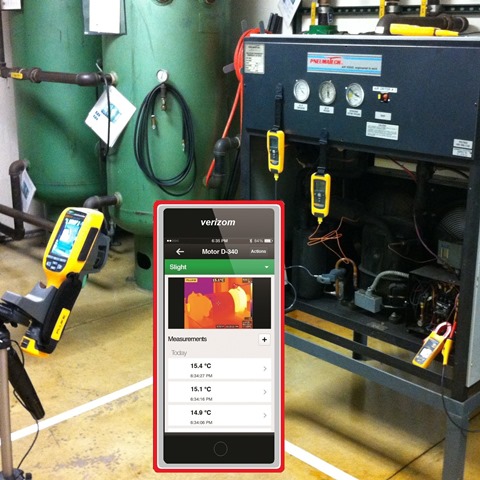Since its founding by John Fluke Sr. after World War II, the test and measurement company that bears his name has been driven primarily by one thing: understanding the needs of its customers. Half a century later, that driving force has manifested itself in the creation of Fluke Connect, the most advanced measurement information systems available today.

At least 20 years ago, according to Sal Parlatore, Vice President of Marketing for Fluke’s Industrial Group, and John Neeley, Engineering and Product Manager for Fluke Connect, the company began to see that customers didn’t always require a more precise measurement, but instead needed to know to what the measurement really meant, and what action was required because of it. The technology wasn’t available to practically fulfill the customer need, but the seed was planted.
The technology was available eight years ago to bring about another element that would be essential for Fluke Connect. In the Fluke 233 digital multimeter, the display was removable, allowing users to place the meter body in one location while the measurement was transmitted wirelessly and viewed in another. Done so that the user could take readings safely, it resulted in the wireless separation of measurement and interpretation.
Beginning in the mid to late 2000’s, the need to provide customers with software to collect, analyze and communicate the actions dictated by measurements gathered from Fluke hardware was recognized. Fluke’s continuing user research showed that, after the introduction of the iPhone in 2007, service technicians were rapidly adopting smart phones, which offered an essential link through which measurement data could be transmitted and stored. And with the advent of cloud computing, both technicians and managers were relying more and more on software services in the form of remote databases and applications to get their work done. Another key tech development was Bluetooth Low Energy (BLE), which opened the possibilities of effective communication between test tools and smartphones.
In 2010, the Fluke Connect development effort intensified. It was a broad collaborative effort, involving more than 30 different instrument lines across the Industrial Products group. At least eight different teams were involved in advancing the project:
- Fluke Connect hardware team, responsible for the communication aspects of the Fluke products,
- The User Interface (UI) and User Experience (UX) teams within Fluke, taking advantage of their dogged pursuit of optimal UX in/out hardware tools and transferring that experience to the Fluke Connect software interface,
- The Apple and Android teams, focused on making the system operate on mobile devices,
- The Desktop, Web, and Cloud teams, working to take mobile data and meld it into the back-end servers and databases, then displaying it on Web pages on practically any device.
These teams worked to make Fluke Connect one complete, unified system.
With the introduction of Fluke Connect in 2014, customers were presented with a system that was both easy to use and essential for solving everyday problems. But it was only the start; Fluke Connect’s connections are continuing to grow, reaching into all aspects of modern corporate operations.
Advertisement
Learn more about Fluke





